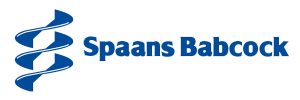Carlisle WwTW (2021)
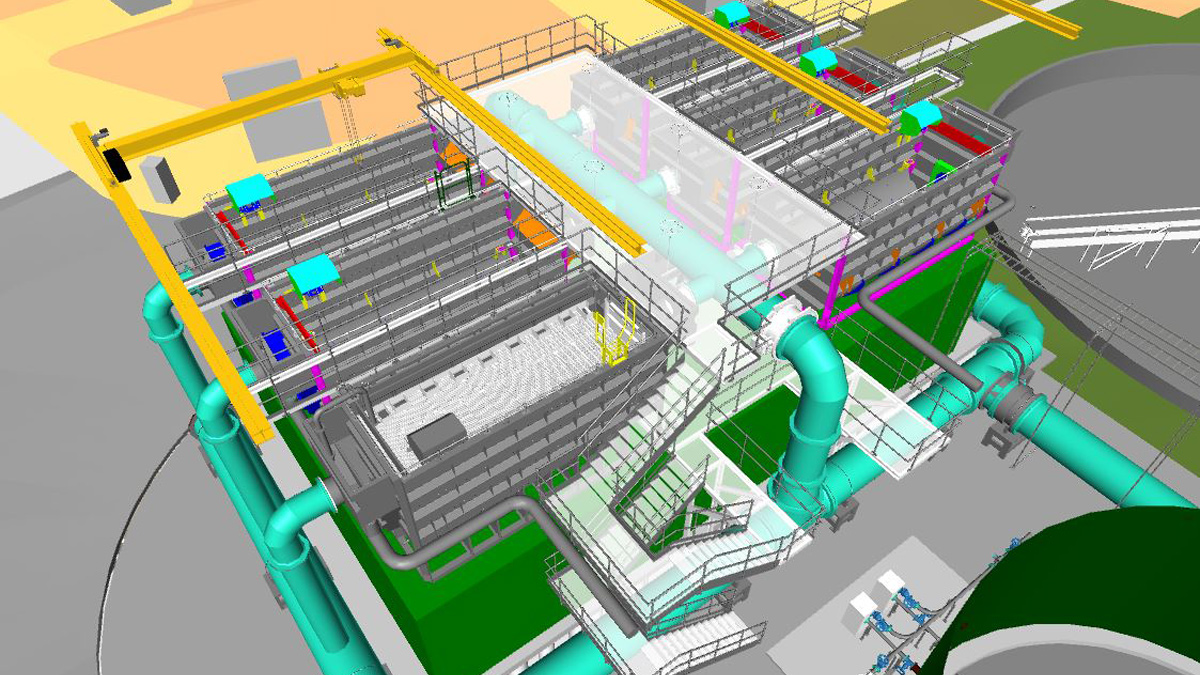
Tertiary solids removal plant model - Courtesy of Advance-plus
Carlisle WwTW is in north Cumbria, which is part of United Utilities’ northern area. The site is located to the north west of Carlisle’s city centre, on the banks of the River Eden, and serves the city of Carlisle. The treatment works receives domestic sewage, trade flows, and tankered imports, providing primary and secondary treatment prior to discharge to the River Eden. It is predicted that Carlisle will have 108,475 of domestic population and 4,285 of tourist population by the year 2035; these figures have been used as the design horizon in the basis of design for the proposed new works at Carlisle WwTW.
Background
Indigenous sludge from Carlisle and imported sludge from surrounding works are treated at the site where the process employed is liming prior to disposal to agriculture. The consented FtFT (flow to full treatment) is 104,976m3/d (1,215 l/s) and flows in excess of this figure are discharged through storm tanks to the River Eden.
Incoming domestic and trade flows from the catchment are received in a deep underground channel. Imported industrial flows and septage are discharged by tankers in the inlet. Two duty/assist Archimedes screw pumps lift incoming flows and tankered imports to an elevated inlet works comprising 3 (No.) 6mm 2D inlet screens and 2 (No.) detritors. Site drainage is returned to the inlet upstream of the FtW (flow to works) screw pumps via gravity. Flows in excess of the first stage pumps capacity (184,982m3/d (2,141 l/s) are screened down to 6mm by a storm screen located in the CSO chamber.
Screened stormwater overflows and discharges to the River Eden, while screenings captured are passed forward to the works. Screened flows up to FtFT are lifted to an elevated PST channel via 2 (No.) duty/assist FtFT screw pumps where flows are then biologically treated in primary and secondary stages.
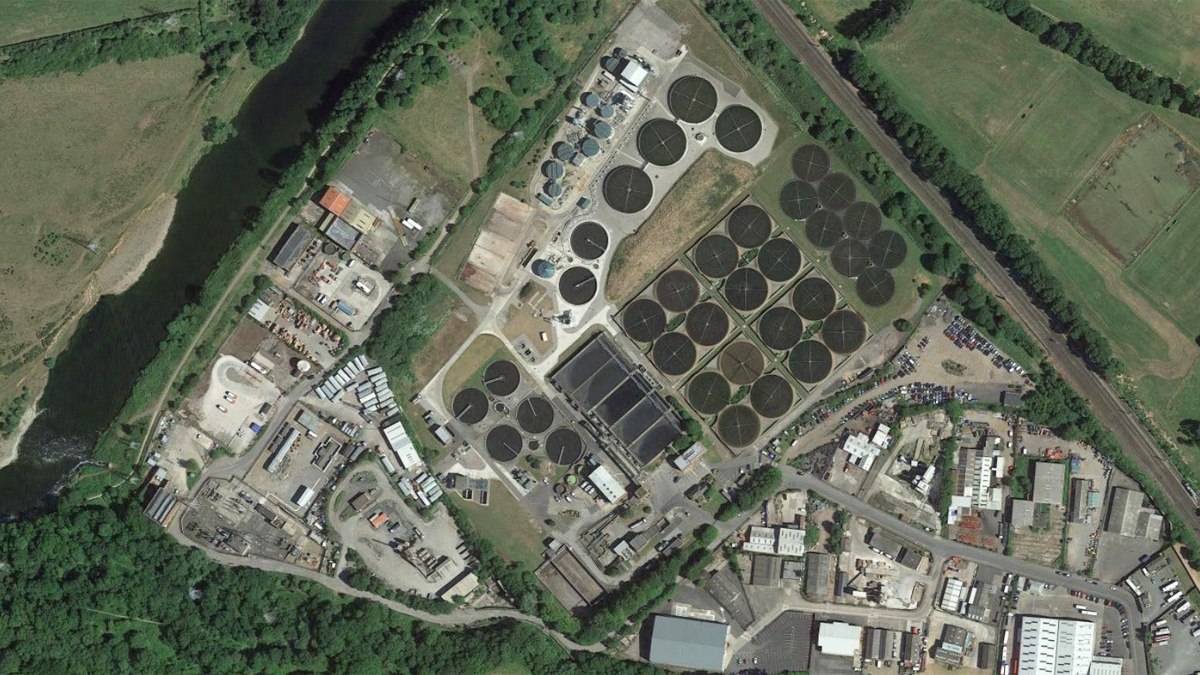
Google maps image of Carlisle WwTW – Courtesy of United Utilities
Project objective
The works are needed to deliver the Environment Agency (EA) Water Industry National Environmental Programme (WINEP) outputs for a shellfish water quality driver and designed based on a 2035 design horizon. WINEP represents a set of actions that the EA have requested all 20 water companies operating in England, to complete between 2020 and 2025, in order to contribute towards meeting their environmental obligations.
The latest WINEP dataset was issued to United Utilities in March 2020, but specifically for Carlisle this means the works must achieve the following:
- Limit the number of spills per year of storm sewage and settled storm sewage to ten, or provide an equivalent form of treatment such as validated dose UV treatment for settled stormwater.
- Provision of event duration monitoring on all overflows to storm storage and stormwater treatment facilities.
Additional project requirements
Additional requirements of the project scope, not directly linked with the WINEP programme, are as follows:
- Increase in the screening capacity for stormwater.
- Increase standby capacity at the inlet works to bolster resilience and secure compliance in passing forward permitted flows.
- Provide additional treatment of the secondary treated sewage (final) effluent.
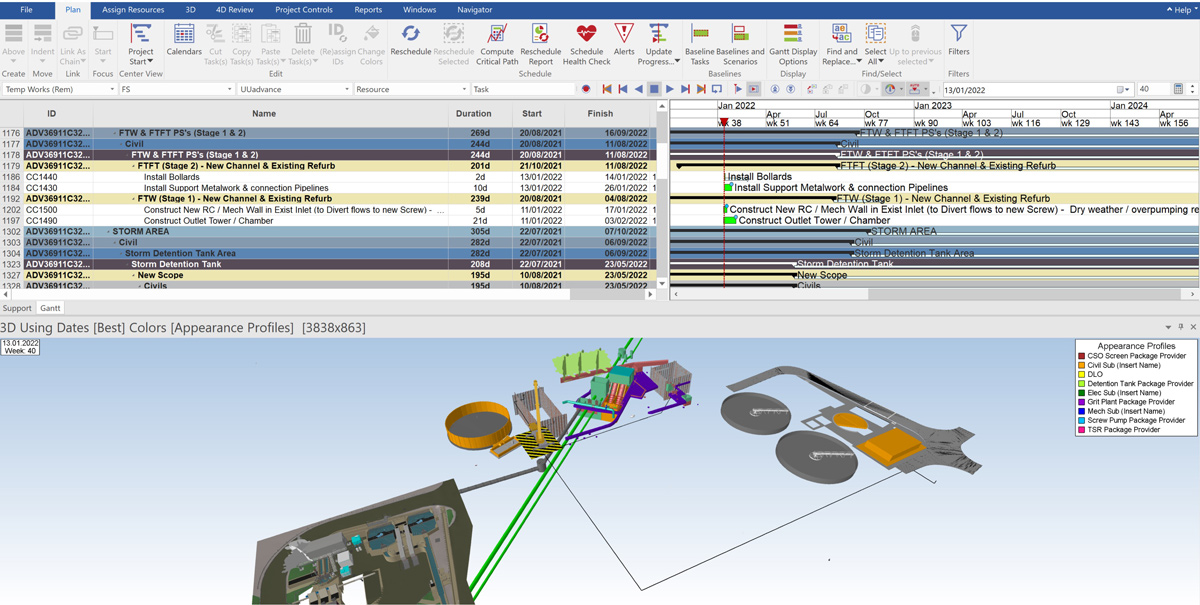
Digital rehearsal – Courtesy of Advance-plus
Carlisle WwTW Shellfish Waters Project: Supply chain (July 2021) – key participants
- Principal designer & principal contractor: Advance-plus
- MWH Treatment
- Stantec UK
- Murphy Group
- CSO screens: Huber Technology
- FTW & FtFT screw pumps: Spaans Babcock Ltd
- Inlet screens: Longwood Engineering
- Over pumping/temporary works: Vanderkamp UK
- Screenings handling: M and N Electrical and Mechanical Services
- Detritors/rakes: Jacopa
- Detention tank: Monostore
- Pile cloth media filters: Eliquo Hydrok Ltd
- UV systems (final effluent & storm): Xylem Water Solutions
- Software: Tata Consultancy Services
The design rationale for achieving the stormwater spill frequency requirement is based on intercepting the existing WwTW storm outfalls and receiving spills from the new inlet CSOs into a new detention tank storm pumping station. Storm flows in the existing overflow pipes drop into the new detention tank storm pumping station, which then lifts flows (peak @ 3,600l/s) into a new 3,500m3 concrete detention tank. When the detention tank is full, or spill flows exceed the pump capacity, the storm sewage will fill the pumping station wet well and then discharge down the existing overflow pipes.
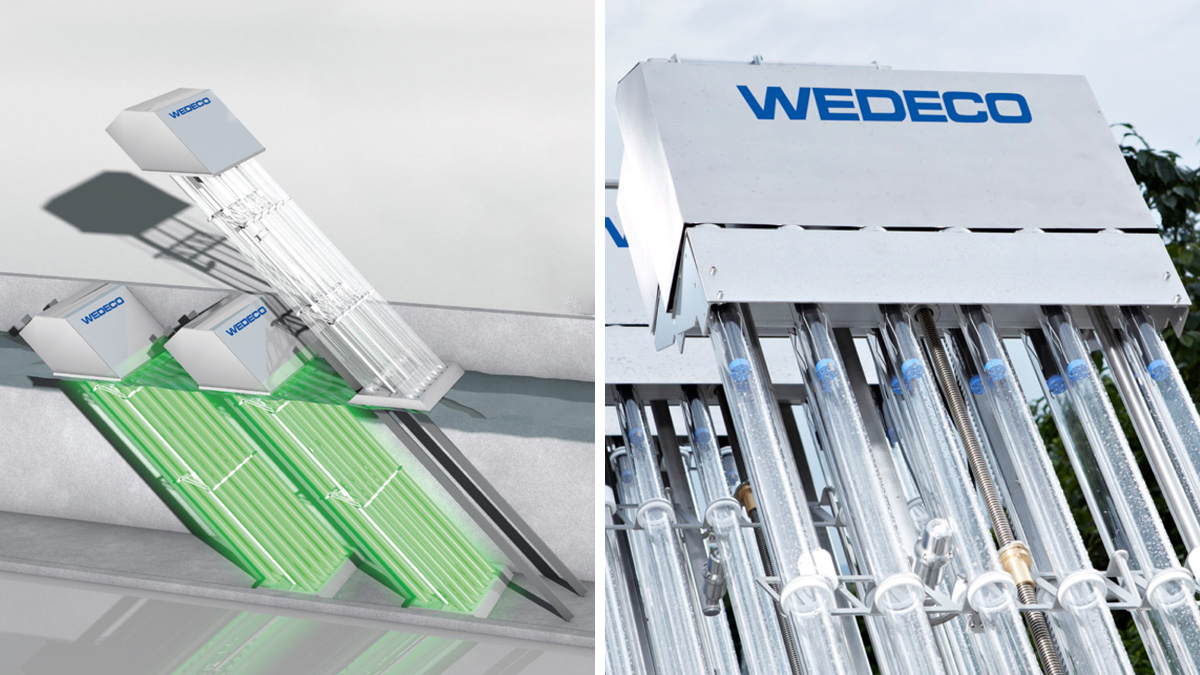
Xylem Duron UV irradiation system – Courtesy of Xylem Water Solutions
UV irradiation
Settled storm sewage, however, will be treated, prior to discharge with the treatment works final effluent, via UV irradiation to meet the ‘no deterioration’ requirements for shellfish waters of the Solway Firth. A reduction of 2.6 log10 through stormwater UV Irradiation has been agreed with the EA, based on a Xylem Water Solutions Duron UV irradiation system consisting of a single channel of nine banks (eight duty/one standby), which will deliver a target UV dose at a maximum flow rate of 941 l/s and minimum UV transmittance of 20%. There are challenges ahead in design of the system start-up to meet demand on arrival of storm flows at the works, ensuring the system is stable and will deliver the required dose, and will control the rate of change of flow to the system as the storm flows vary across each event.
Inlet works
At the inlet works, increases in predicted storm flows to Carlisle WwTW will mean significant re-arrangement of the inlet to the works to accommodate the additional screening capacity required. Construction works will require careful planning to enable safe construction of a new chamber to accommodate the additional new CSO screen.
Challenges will continue as works to construct and install a third flow to works (FtW) screw pump, equal in capacity to the existing screw pumps constructed in the 1970s, that connects into the incoming flows, which pass beneath a culvert that currently carries storm flows over the screw pump inlets.
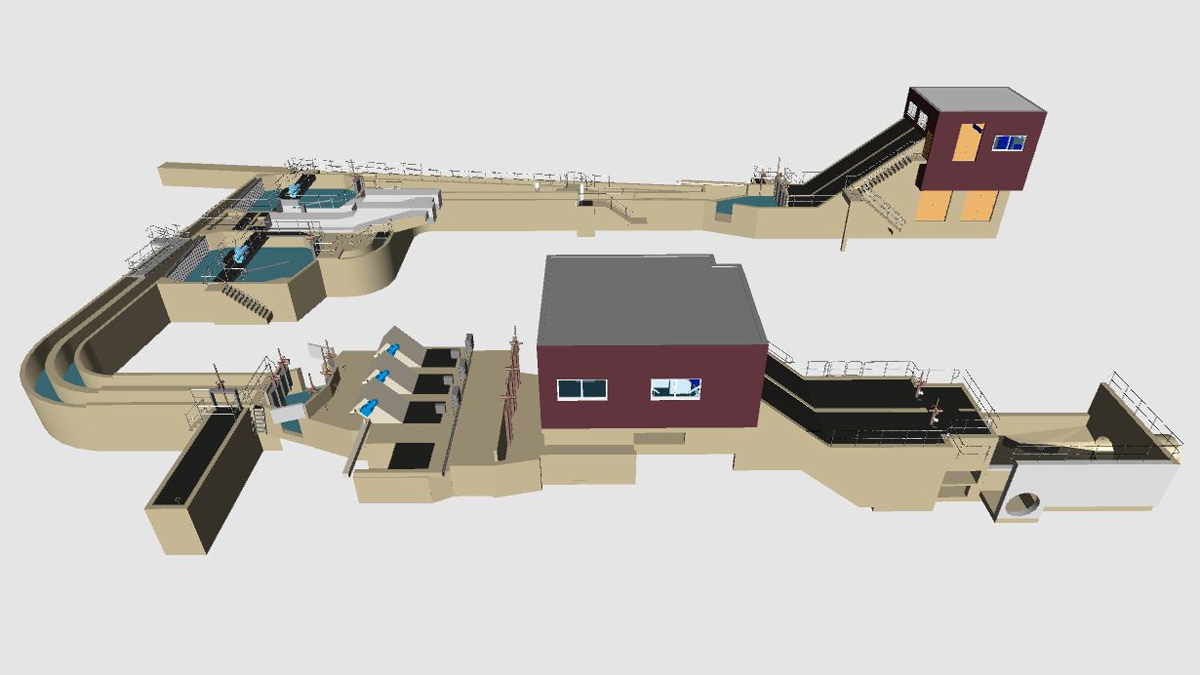
Carlisle WwTW inlet works model – Courtesy of Advance-plus
Similarly, channels are to be constructed to accommodate an additional 6mm screen, again equal in capacity to the existing screens in that group along with a new manually screened emergency bypass, all while the works continues to operate.
Like for like replacement of the existing grit removal equipment and a repeat of works at the FtW screw pumps at the FtFT pumps to introduce a third pump will conclude the improvements to this area of the works.
Tertiary solids removal
At the back end of the works the quality of effluent requires a reduction in load of faecal indicator organisms (FIO) being discharged to the designated shellfish area in the Solway Firth. Evaluation of data obtained from a final effluent sampling programme, lasting over twelve months, meant risks in not achieving the WINEP reductions required through:
- Non-compliance with a dose-based permit due to high risk of UVT below 20% and/or UVT below 30% at high flows.
- Failure to meet the target E. coli concentration at the boundary to the Shellfish Water due to higher observed concentrations of suspended solids and iron.
To mitigate against these risks, installation of a tertiary solids removal system is proposed to provide reduced risk of non-compliance and a significantly reduced capital expenditure and whole life cost associated with the UV irradiation equipment.
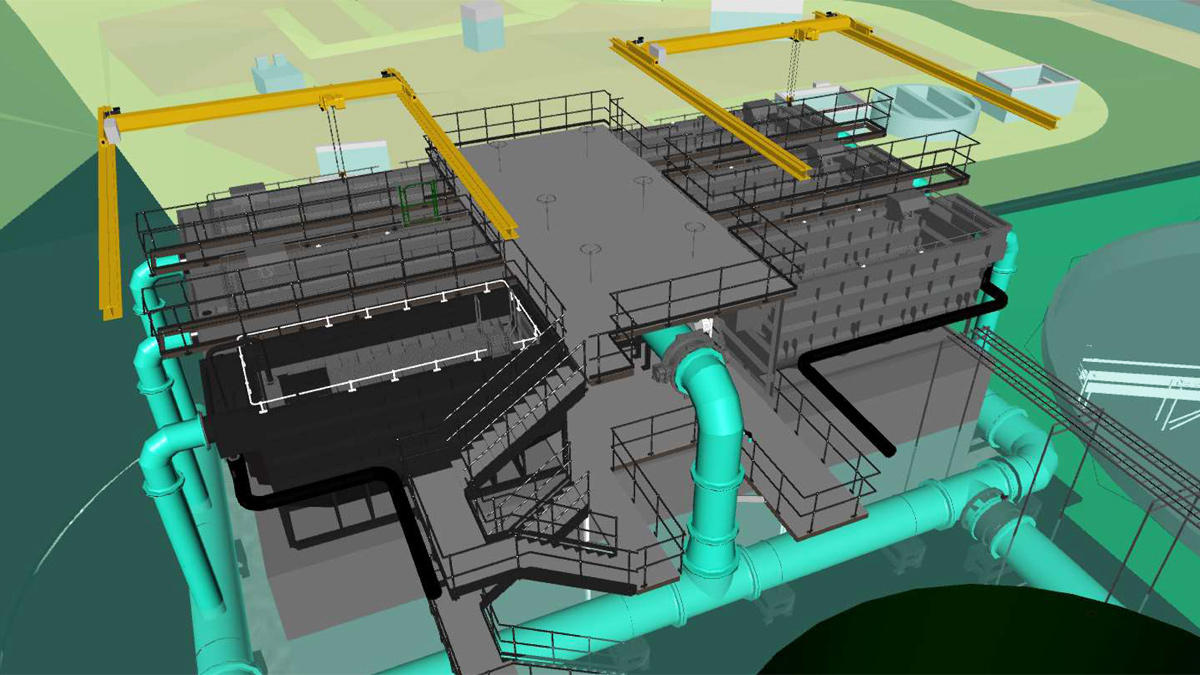
Tertiary solids removal plant model – Courtesy of Advance-plus
Eliquo Hydrok Ltd pile cloth media filters (PCMF) have been selected to remove suspended solid particles from flows up to 1,400 l/s, both pre, and in conjunction with a Xylem Water Solutions Duron system consisting of a single channel of inclined UV lamp modules configured as eight banks (seven duty/one standby). The treatment system has been selected based on a site-specific dose response and validated UV equipment.
The PCMFs offer a compact, efficient tertiary treatment for the removal of solids, with ultra-low power consumption, which can filter full flow even during backwash. This coupled to the UV system provides a significant reduction in the size of UV plant required, with obvious TOTEX and sustainability benefits.
Delivery assurance
To deliver a scheme of such complexity, with existing asset interfaces and a challenging output date, the team knew that they had to deliver this scheme differently. Moving away from traditional project delivery and adopting a clear digital strategy from the outset is enabling the team to deliver in an innovative and efficient way.
Immediately after contract award, amidst the height of pandemic restrictions, enabling works began with a full and comprehensive 3D laser scan survey of existing areas of interest, where new works would interface with the existing. Point cloud outputs from the scans were digitally rendered and these formed the foundation for the solution 3D model.
Synchro Pro (4D construction scheduling software) and Digital Rehearsals are being adopted to accurately timeline the construction process at Carlisle, turning the 3D model and programme into a fully integrated visualisation build sequence.
By modelling temporary works, high risk activities and rehearsing in readiness for breaking ground, the team are successfully driving a collaborative environment through engaging the client, supply chain, operations and site teams, in developing and agreeing build sequences. This is promoting commitment and ownership of the programme at every stage, allowing the team to protect the delivery dates and provide delivery intensity.
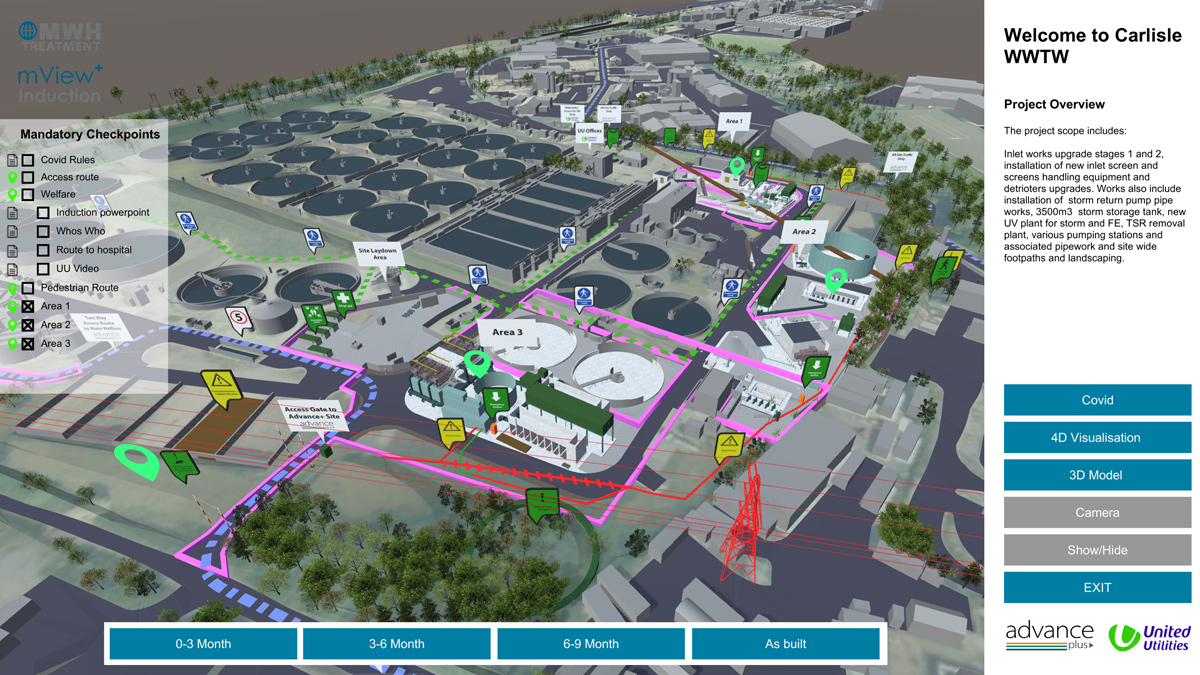
Digital induction – Courtesy of Advance-plus
The project delivery team are ensuring quality control and delivery assurance through the application of BIM 360 Glue and Field, ensuring digital delivery is at its heart and resetting the behaviours, processes, and methodologies to make it a success.
mView+ is also being utilised as the digital induction gateway to site. This is a fully interactive and immersive digital overview of the project in its entirety and is the first project on the United Utilities’ framework that is adopting this innovation site induction solution designed to change the way site hazards, phases of works, logistics plans and environmental and safety risks are communicated to those being inducted to site.
Conclusion
As project design approaches the halfway point, the advance-plus strategy to build the project in a digital space, as a rehearsal for the real construction, paves the way for successfully achieving the output date of October 2022. Digitally rehearsing the build enables the risk of construction issues to be reduced to a minimum and allows the team to visually understand the sequence and prepare for a smooth construction roadmap.







